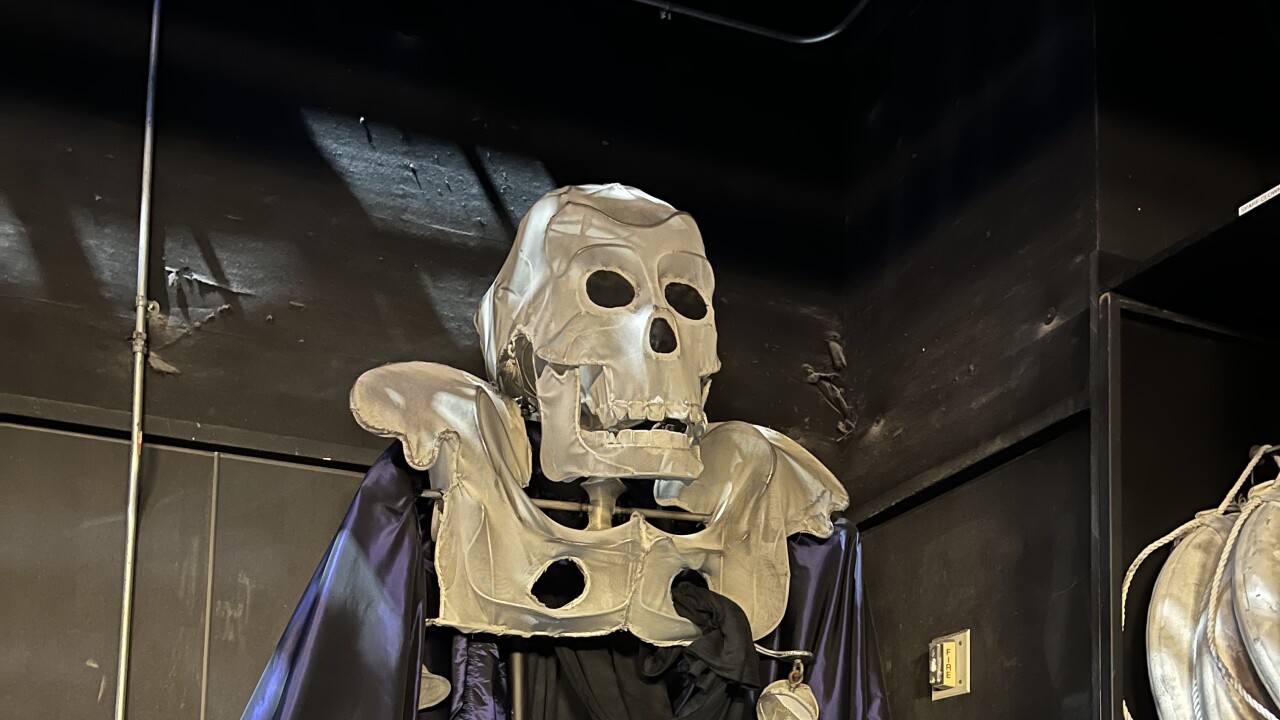LAS VEGAS (KTNV) — When you think about jobs at Cirque du Soleil, a scuba diver probably isn't the first thing that comes to mind. But for Chum Stine, it's just another day at work.
He's an Aquatics Team Supervisor at "O" and helps train staff to operate in the 1.5 million-gallon pool.
"We bring in new technicians from various departments like automation, rigging, lighting, carpentry, and we'll train them in rescue certification," Stine said. "If they've come in certified, we'll orient them to the pool, do a pool orientation, and then we'll have them follow a couple of seasoned technicians to start learning what they do in the pool."
BEHIND-THE-SCENES: Watch the "O" stage transform
Stine added that the "O" pool is a great place to train as a scuba diver because of its ability to change the environment.
"Our lifts go down to 17 feet. No performer is going below that level. The pool goes to 25 feet, where all the mechanics are like hoses and masking lines. Only us divers or technicians will go down and deal with all that stuff," Stine said. "We can stagger our lifts so we have nice, tiered areas where people can go deeper and deeper and deeper. It's a great experience and opportunity for them to learn in this environment. All of our team is either a dive master or instructor."
It takes 77 artists and 125 technicians to put on an "O" show. There are 14 divers in the pool during every performance. Six of the 14 are with the aquatics team.
"Two of them are in full face masks, communicating what's going on," he said. "The other four are handling performers."
At some points throughout the show, performers seem to vanish once they hit the water, never to be seen again. While some artists swim off-stage on their own, others get a little help from the divers.
"If we have to travel performers out, we give them a couple of regulators. They'll hold onto us and we'll move into position," Stine said. "They can also free swim to wherever those air stations are because they have choreography to maintain. They have to be all over the pool. We can't be everywhere all at once, so we'll sit in a zone and watch safety while they move in and out of those air stations."
And according to Stine, those air stations are everywhere.
"We'll put in about 20 different regulators along the pool's gutter. Under lifts five and seven here, we'll have six regulators," he said. "The barge also has about 30 regulators underneath it with scuba air."
Trust is a significant factor in ensuring everyone is safe while doing underwater choreography, which the audience will never see during the show.
BEHIND-THE-SCENES: Take a look under the stage at "O"
"Synchronized swimmers will have goggles so they can use that to see. Other performers, generally, will keep their eyes closed. So when we are handling them, we'll grab them, and they'll trust us to put a regulator in their hand," Stine said. "They'll put it in their mouth, and we'll swim them to wherever they're going, and we'll give them a squeeze like, 'Hey, you're at your spot.' They'll know where they're at and either reveal themselves to the audience or know where their next cue is."
The lighting tunnel under the stage has windows under the water. Several windows have names taped to them, serving a specific purpose.
"The divers will grab certain harnesses they wear during the show and put them on underwater," Stine said. "The rigging team will tell us who the lineup is and we'll clip them on the line. They'll be able to find their name and their harness, which is fitted for them."

There are also speakers underwater to help divers and performers hear their cues throughout the show.
"You can probably hear it clearer than you can hear me right now," Stine said. "The only time you would have a hard time hearing in the pool is if you're in the bubbles, the masking, or the center. That will dissipate the sound."
Even the bubbles have a purpose.
"The bubbling water they put in the pool is so they can light it," Stine explained. "If they didn't have that, the light would go straight to the back of the pool and you wouldn't get that illumination that you need with that surface tension."
The water is kept around 88.5 degrees but performers can still get cold going in and out of the water. Stations are set up around the pool to keep them warm.
"That temperature works well because the performers wear such skin-tight suits. Once you're out of the water, that air cools down quickly and it gets cold. We have hot water hoses. You can start to get cold if you're in the show, especially if you're not doing a lot of activity. You can pop a hose in your wet suit and get warm. There are shower heads where the artist can get hot water coming in or going out of the pool," Stine said. "We have heaters that we turn on backstage. There's also a hot tub here so that they can stay warm that way."

Stine said the aquatics team always keeps an eye on the pool to ensure everyone is safe before, during, and after shows.
"They'll always check in with us because our deck supervisor always monitors what's going on in and out of the water. So if you get in the water, we know about it and when you get out," Stine said.
Several times a year, that water disappears so crews can give the pool some tender, loving care.
"The water itself, we change it at least twice a year during our dark weeks. The biggest one is in December when we do a two-week drain, clean, paint, and do all kinds of fun stuff," he said. "It's just a giant construction zone. And then, we refill it with water and get back to operations."
Stine said he "stumbled" onto the job with Cirque du Soleil and he can't imagine working anywhere else.
"I get to scuba dive and incorporate it into an environment of talented and smart people with different backgrounds," Stine said. "You've got so many different people who work well together and you see how it seamlessly comes together."



















